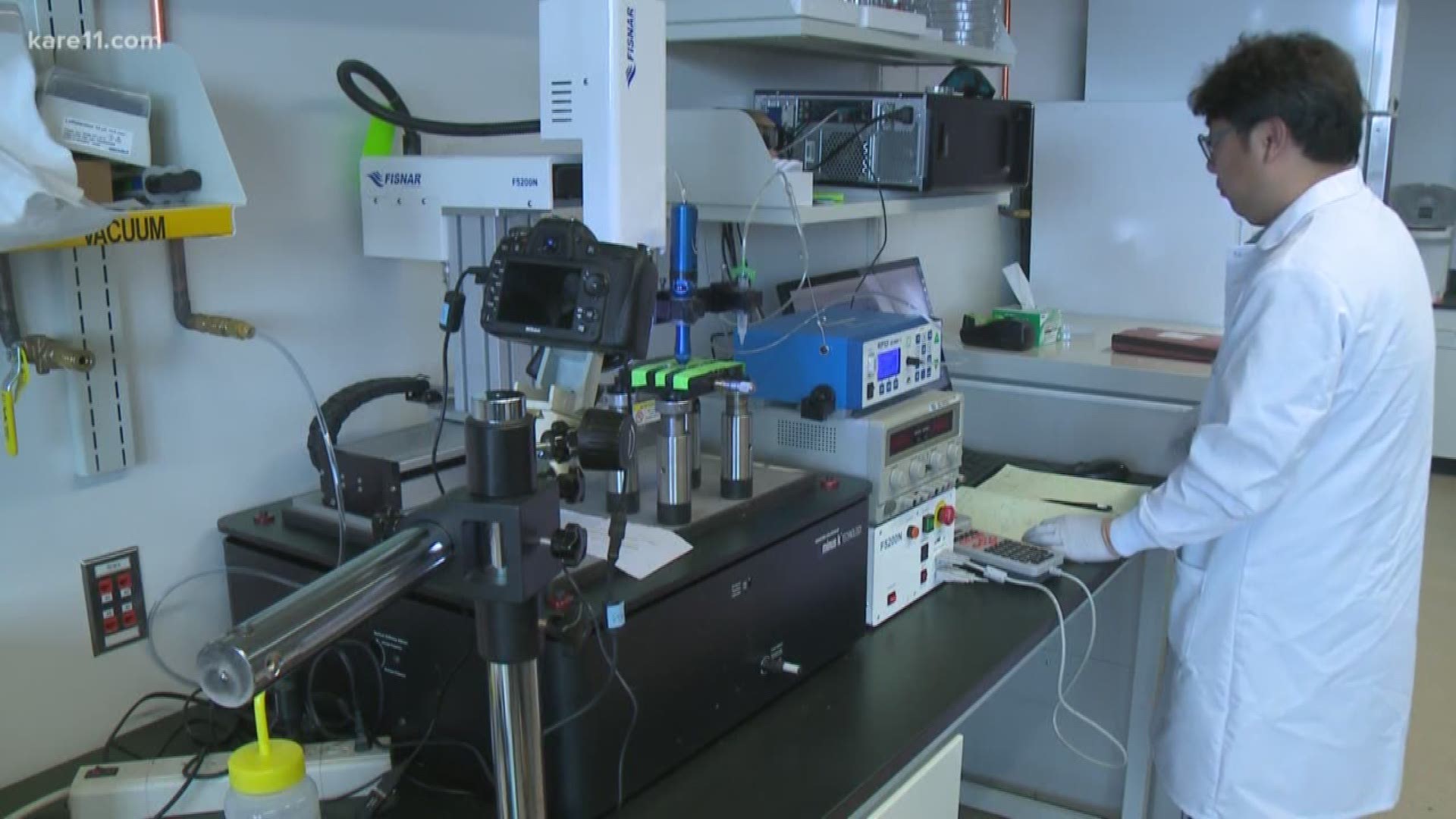MINNEAPOLIS - You can 3D print a shoe or a hand. Technology has brought us far enough into the future where researchers are 3D printing model body parts too.
Now, science has taken one step further into the future. Researchers at the University of Minnesota say they can 3D print cells to help with spinal cord injuries.
"3D print scaffolds and cells for spinal cord therapy and repair," Professor Michael McAlpine said. McAlpine is a mechanical engineering professor at the University of Minnesota. He, along with Professor Ann Parr with the university's neurosurgery department, has developed a device that could potentially treat spinal cord injuries to a certain degree.
"These cells will actually be able to bridge the site of injury and carry signals that are lost due to the spinal cord injury," Parr explained.
Using a state-of-the-art 3D printer that can print both living and non-living things, Parr and McAlpine have developed a device that resembles a grid packed with cells. The cells are encased in a material that would be implanted at the injury site in the spine. Those cells will eventually--hopefully-- develop themselves into neurons and regenerate what has been lost.
"In terms of being able to print these cells, have them differentiate into actual neurons in a 3D printed scaffold is totally ground-breaking," McAlpine said.
"There's a very clear path to the future for us with this project," Parr said. "So this is just a step along the way."
Both Parr and McAlpine said they are moving on to implanting the devices into rats. That's another step closer to healing damage from spinal cord injuries.

